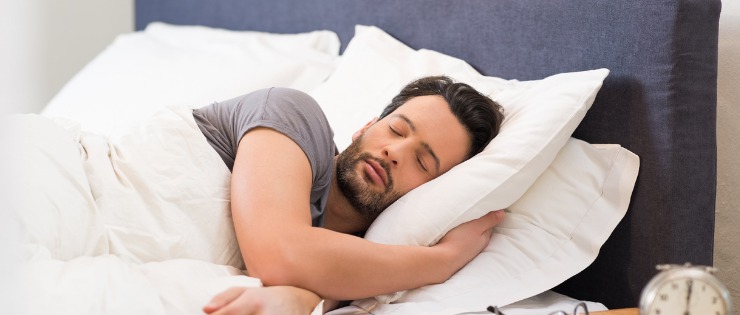Welcome to our comprehensive guide on relieving lower back pain at home. Lower back pain is a common ailment that affects millions of people worldwide. Whether you’re dealing with occasional discomfort or chronic pain, finding effective solutions at home is crucial. In this guide, we’ll explore practical and proven methods to alleviate lower back pain and improve your overall well-being.
Understanding Lower Back Pain
Before diving into remedies, let’s briefly understand the factors contributing to lower back pain. Poor posture, muscle strain, and sedentary lifestyles are often culprits. Moreover, stress, improper lifting techniques, and underlying medical conditions can exacerbate discomfort. It’s essential to identify the root cause to tailor our solutions effectively.
Proper Seating
Start by assessing your seating arrangement. Invest in an ergonomic chair that supports your lower back’s natural curve. Ensure your feet touch the ground, promoting proper alignment.
Workstation Setup
If you spend extended hours at a desk, optimize your workstation. Position your monitor at eye level to prevent slouching, and use a keyboard and mouse that promote a neutral wrist position.
Core-Strengthening Exercises
Engage in targeted exercises to strengthen your core muscles. Incorporate routines like planks, bridges, and bird-dogs to enhance stability and reduce lower back strain.
Cardiovascular Exercise
Regular cardiovascular exercise promotes blood flow and reduces inflammation. Activities like walking, swimming, or cycling are gentle on the lower back while providing overall health benefits.
Yoga and Meditation
The mind-body connection plays a crucial role in managing lower back pain. Explore yoga and meditation practices to alleviate stress and enhance relaxation. Mindfulness techniques can positively impact pain perception.
Deep Breathing
Practice deep breathing exercises to relax tense muscles. Inhale deeply through your nose, hold for a few seconds, and exhale slowly. Repeat several times throughout the day to promote relaxation.
Hot and Cold Therapy
Apply heat or cold packs to the affected area. A hot compress or heating pad can soothe tight muscles, while an ice pack helps reduce inflammation. Alternate between the two for optimal results.
Herbal Supplements
Consider herbal supplements known for their anti-inflammatory properties. Turmeric, ginger, and Boswellia supplements may provide natural relief. Always consult with a healthcare professional before introducing new supplements.
Hydration
Proper hydration is essential for overall health and joint function. Drink an adequate amount of water to keep your intervertebral discs hydrated and functioning optimally.
Balanced Diet
Adopting a balanced diet rich in nutrients supports overall well-being. Incorporate anti-inflammatory foods like fatty fish, berries, and leafy greens into your meals.
Proper Lifting Techniques
Whether at home or work, practice proper lifting techniques. Bend at the knees, keep the object close to your body, and avoid twisting to prevent unnecessary strain on your lower back.
Sleep Ergonomics
Invest in a quality mattress and pillows that support a neutral spine. Ensure your sleeping position maintains the natural curve of your spine for a restful and pain-free night’s sleep.
When to Seek Professional Help
If your lower back pain persists or worsens, it’s crucial to consult a healthcare professional. They can conduct a thorough assessment, recommend diagnostic tests if necessary, and create a personalized treatment plan tailored to your needs.
Understanding the Basics
Dealing with lower back pain requires a fundamental understanding of its triggers and potential remedies. Let’s delve into the essentials.
Assessing the Pain Points
Begin by identifying the specific areas of discomfort. Is it a dull ache or a sharp pain? Understanding the nature of your pain will guide your approach to relief.
Embracing Ergonomics
Ensure your workspace and living environment are ergonomically friendly. Optimal seating and posture can significantly contribute to alleviating lower back pain.
Gentle Yoga Poses
Engage in gentle yoga poses that focus on stretching and strengthening the lower back muscles. Incorporate poses like Child’s Pose and Cat-Cow for maximum benefit.
Pilates for Core Strength
Building a robust core is key to lower back health. Integrate Pilates exercises into your routine to fortify your core muscles and provide the support your lower back needs.
Foam Rolling Therapy
Invest in a foam roller for targeted self-massage. Roll out tension in your lower back by gently gliding the roller along the muscles, offering relief and promoting flexibility.
Tennis Ball Technique
Place a tennis ball under the affected area and gently roll it in circular motions. This DIY massage technique can help release knots and tightness.
Stay Hydrated
Hydration plays a crucial role in maintaining spinal health. Ensure you’re drinking an adequate amount of water daily to keep your intervertebral discs well-hydrated.
Maintain a Healthy Weight
Excess weight can contribute to lower back strain. Adopting a balanced diet and incorporating regular exercise can help manage weight and alleviate pressure on your spine.
Consult a Physical Therapist
If home remedies prove insufficient, consider consulting a physical therapist. They can provide personalized exercises and guidance to address the root cause of your lower back pain.
Explore Chiropractic Care
Chiropractic adjustments can offer relief by realigning the spine. Consult with a qualified chiropractor to explore this alternative therapy.
Conclusion
In conclusion, relieving lower back pain at home involves a holistic approach encompassing ergonomic adjustments, exercise, stress reduction, and lifestyle modifications. By incorporating these strategies into your daily routine, you can enhance your overall well-being and enjoy a life free from persistent lower back pain.




